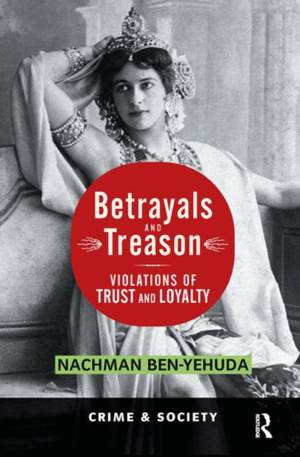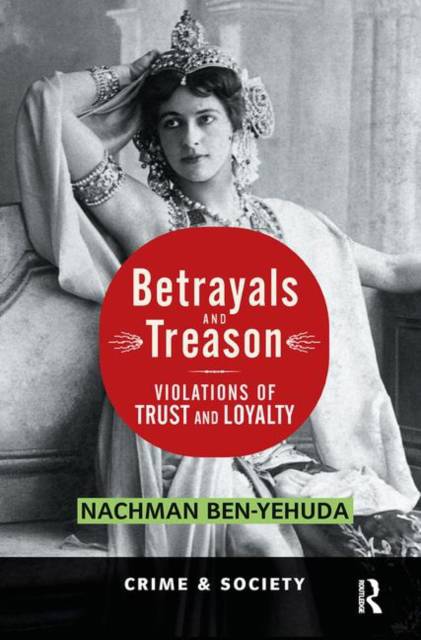
- Afhalen na 1 uur in een winkel met voorraad
- Gratis thuislevering in België vanaf € 30
- Ruim aanbod met 7 miljoen producten
- Afhalen na 1 uur in een winkel met voorraad
- Gratis thuislevering in België vanaf € 30
- Ruim aanbod met 7 miljoen producten
Zoeken
€ 274,95
+ 549 punten
Uitvoering
Omschrijving
Betrayal and Treason examines betrayals as violations of both trust and loyalty. It offers a typology based on membership in or out of collectives within the contexts of secrecy/non-secrecy. The book shows that betrayals include such categories as espionage, whistle-blowing, infidelity, political turncoating, conversions, collaboration with occupying forces, informers, mutinies, defections, strike-breakers, professional, intellectual, and international betrayals, human rights violations, surveillance, assassinations, and state sponsored terror. Each one of the categories is presented with enticing, stimulating, and appropriate real-life illustrations and narratives.The book focuses on treason, examines diverse cultures (European countries, Israel, Canada, the United States) and such periods as World War II, the conquest of Mexico, and looks at such figures as Benedict Arnold, Ezra Pound, Edward VIII, Malinche, Vindkun Quisling, Lord Haw Haw, Tokyo Rose, and a host of others. Since World War II is an excellent period through which one can examine issues of treason, and since there has been such an increased interest in World War II, this book places a particular emphasis on that period and war. Betrayal and Treason is original in its conceptual framework, and in its breadth and depth of coverage. Yet judging by the amount of books published on similar topics in the past, there can hardly be a doubt that there has always been a genuine demand and "hunger" for an inclusive and integrative book such as this one. By offering a new and interpretive framework for betrayals, this book can serve both scholars and lay people alike in gaining a much better understanding of such a complex and fascinating behavior as betrayal.
Specificaties
Betrokkenen
- Auteur(s):
- Uitgeverij:
Inhoud
- Aantal bladzijden:
- 416
- Taal:
- Engels
- Reeks:
Eigenschappen
- Productcode (EAN):
- 9780367098810
- Verschijningsdatum:
- 31/07/2019
- Uitvoering:
- Hardcover
- Formaat:
- Genaaid
- Afmetingen:
- 152 mm x 229 mm
- Gewicht:
- 721 g

Alleen bij Standaard Boekhandel
+ 549 punten op je klantenkaart van Standaard Boekhandel
Beoordelingen
We publiceren alleen reviews die voldoen aan de voorwaarden voor reviews. Bekijk onze voorwaarden voor reviews.











